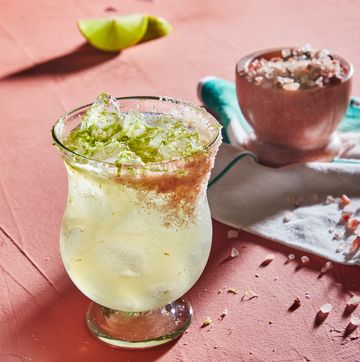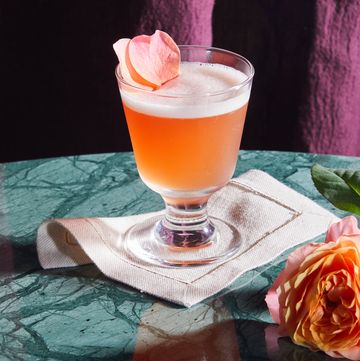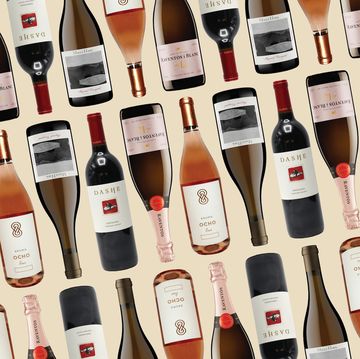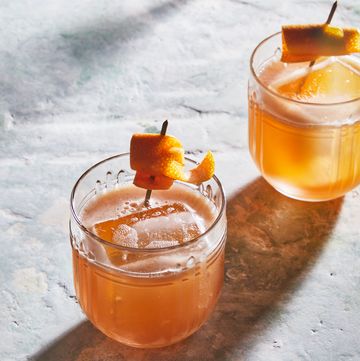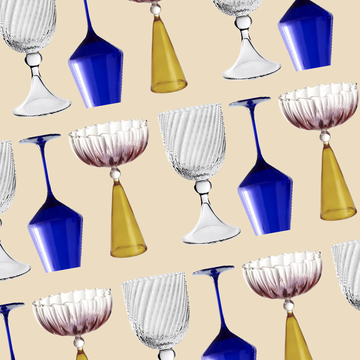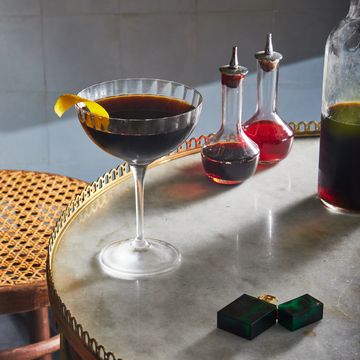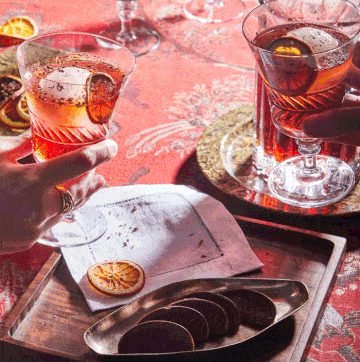The “classics” in the wine world have earned that categorization for a reason, and we’ll always be fond of the vinos voted as the best wines for beginners. Sauvignon blanc, riesling, chardonnay, pinot noir, merlot and cabernet sauvignon showcase the basics and display the most common flavors and aromas you’ll come across on most restaurant menus and at wine shops. In other words, these quintessential wines are a great starting point to get acquainted with the world of wine.
“Gaining familiarity and knowledge with dominant and commonly found wines helps to cultivate a personal point of reference for what you do or don’t like,” says Nick Leo, co-owner of the natural wine bar/shop The Cave DSM in Des Moines, Iowa. However, “you shouldn’t feel obligated to like something just because it's ubiquitous or popular.”
If you’re willing to take a small risk by trying something new, you introduce the opportunity for a potential big reward: a new favorite wine.
In addition to simply being fun to sample a style outside of your comfort zone, sipping something new beyond that usual Caymus cab or Rombauer chardonnay allows you an opportunity to potentially discover a new favorite, says Aubrey Bailey, founder and co-owner of Cadet Wine & Beer Bar and co-founder and co-owner of Chispa Bar in Napa, California.
“These varieties have the ability to show a broad spectrum of aromatics, body and flavor. There are so many amazing producers playing with any number of different and unique varietals,” she explains.
You’ll probably also learn something new. Leo says exploring lesser-known wine styles may teach you some lessons about culture or history of a specific region. If you normally like a white wine from Spain, peek around at what other grapes thrive in that region. Chances are, you’ll find a “neighbor” that you might also enjoy. Or if you typically lean towards wine that’s crisp, bright and refreshing at this time of year, ask at your local wine shop or at a restaurant if the staff is loving anything similar.
As a cherry on top, you’ll probably also save some money if you flesh out your wine collection with some more unique grapes and blends.
“These wines are often available at a really accessible price point because they are less sought after,” adds Katherine Sturgill, certified sommelier, wine director and general manager at Daisies in Chicago, Illinois.
Lesser-Known Wine Varieties to Try
When you’re ready to take it to the next level—or are simply seeking something new and different—it’s time to drink outside of the box, the wine experts we spoke to agree. Start with these under-the-radar wine styles.
Touriga Nacional
If you enjoy cabernet sauvignon, zinfandel or merlot, you’ll likely love this red made from small, thick-skinned grapes native to Portugal. This wine isn't shy, and it delivers a big punch of ripe blueberry, plum and black currant flavors, often with a hint of spice or slate. Since it’s full-bodied, high in tannins and usually offers a decent amount of acidity, touriga nacional also has stellar aging potential and is brilliant served alongside barbecue, steaks, tomato-based stews and hearty casseroles.
“Portugal boasts a rich wine culture and was once the largest exporter of wine to the United States before the French wine explosion in the 1920s,” says James Couty, food and beverage manager at Pendry Chicago and Chateau Carbide Chicago, Illinois.
Hybrid Grape Varieties
Most wine grapes we know—like pinot noir, chardonnay, or syrah—are from the vitis vinifera family, which is indigenous to Europe and the Middle East, Sturgill says. But there are actually 78 other families of grapes, some of which are indigenous to the U.S. When you cross vines of grapes from different families, you’re left with a hybrid grape, many of which can be resistant to certain diseases or extreme heat, cold or drought more than their vitis vinifera peers.
“Initially, when colonizers came to the U.S., they tried to make wines from these grapes, but these wines were written off as being ‘foxy,’” Sturgull says, meaning that they were thought of as too musky or wild. “However, there has been a resurgence of the use of hybrids, especially in the Midwest. I think as climate change continues to affect viticulture, we can explore hybrids more seriously.”
Marquette, vidal blanc, chambourcin, la crescent, seyval blanc, norton and frontenac are common examples; ask at local wineries what grapes thrive in your neck of the woods.
Orange Wines
Don’t let the name fool you. These wines aren’t always the color of the orange in your fruit bowl; they’re often a muted tone that’s “most akin to rosé,” Couty says. Orange wines range from golden to amber to pink in hue. “I believe we will see more of these wines hitting the table especially during the coming summers, as they become more popular and familiar with consumers.”
Orange wines are made in a similar style as red wine, just with white grapes like gewürztraminer, riesling, muscat and pinot grigio. Aging white grapes with the skins of the fruit allows some of the pigment to seep into the juice, and this tint remains even after the skins are strained away and the wine is aged a bit more before being bottled and sold.
Since the grapes that set the stage for an orange wine are so diverse, orange wines can be everything from light and citrusy to full-bodied and intense. The most common flavors include grapefruit, honey, cooked stone fruit or sour beer-like.
By the way, some natural wine brands offer orange wines, but not all orange wines are natural. Since this wine category is just now really growing in popularity in America, in many parts of the country, you’ll have the best luck finding orange wines at restaurants and shops that specialize in natural wine.
Muscadet
This crisp white wine has roots along the Atlantic coast of the Loire Valley in France, Leo says, and due to the salty ocean air and the nature of the grape, the wine packs a pleasant “salty and stony quality, along with high minerality,” Leo says. “Muscadets are incredibly food friendly as well as very reasonably priced.”
It’s not the same as—or related to—muscat, moscatel or moscato. This is a dry, light-bodied white that usually tastes like tart green apple, lemon, lime and saline. It pairs beautifully with seafood, salads and goat cheese. Leo recommends this wine varietal to anyone who currently enjoys sauvignon blanc, vinho verde or similar acidic white wines.
Dry, Sparkling Reds
We’ve come a long way from the syrupy-sweet lambruscos you might remember being all the rage in the 1980s. Today’s sparkling reds—including Italian lambrusco and its cousins made with aglianico, piedirosso and other red grapes—are dry, refreshing and one of the best partners for everything from pizza night to cheese and charcuterie parties to Thanksgiving dinner.
“Dry sparkling reds are incredibly food-friendly because they have acid, tannin and generally a frothy type of effervescence that can pair with so many types of food,” Leo says. “I think every restaurant that serves brunch should have these types of wines on the menu.”
(Rather than being ultra-bubbly, red txakolina is an effervescent “adopted” member of this category. If you’re craving something with more spice and smoky green pepper notes, seek out something like this Spanish red txakolina.)
White Malbec
Also known as “blanc de malbec,” this wine varietal made in this color has been growing in popularity in the U.K. and South America for the last decade, but is only recently debuting stateside.
Harvest of the red grapes usually begins early (January or February rather than March through May), which allows the grapes to be plucked just after they’ve ripened. This yields a wine that’s low in sugar, low in alcohol and brightly acidic. The grapes are first gently crushed, destemmed and pressed then aged in stainless steel so that the wine ages completely sans skins—and is crystal white in color. Talk about a tide change from the punchy red malbec that’s known for its dark berry and chocolate flavors.
White malbec generally smells a bit like red fruit, even though it is starkly white, and it tastes like green apples, white peach, cherry, raspberry and citrus. Try it with chicken, turkey, seafood, vegetarian fare or your favorite spicy takeout.
Pinot Meunier
Typically only found as a blending grape in classic Champagnes (which, to earn the “C” Champagne, must include pinot noir, chardonnay and pinot meunier grapes grown in the Champagne region of France), a handful of winemakers are transforming this red grape in its single-varietal, still glory. If you swoon over sangiovese, gamay or pinot noir, keep your eyes out for this up-and-coming wine style.
Many sommeliers describe pinot meunier like its cousin pinot noir, just a little lighter, with a hint less tannins and a bit more acidity. It tastes like cherries, blackberries, pomegranate and mushrooms—some styles are also slightly floral—and it’s a dreamy companion to pork, mushroom risotto or roast chicken.










